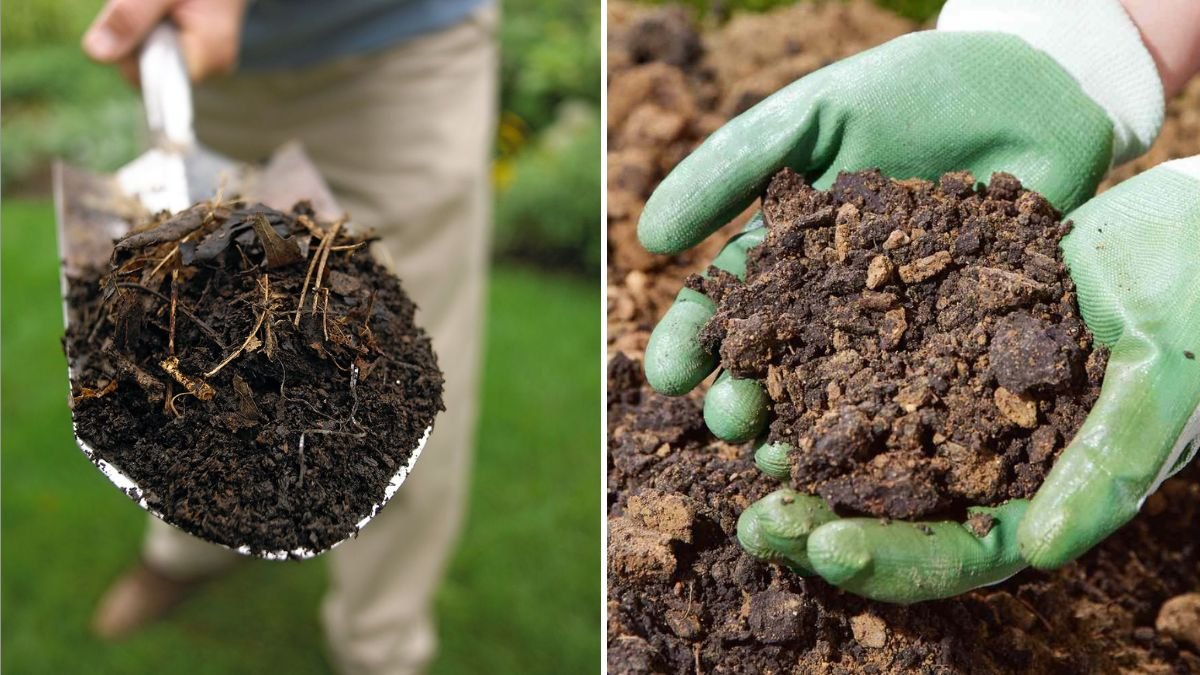Sandy soil has its perks—it drains quickly, warms up early in spring, and is easy to dig. But for many gardeners, those benefits come with big challenges. Plants often struggle in sandy soil because it dries out fast, doesn’t hold nutrients well, and can leave roots thirsty and underfed. The good news? With the right amendments and techniques, you can transform sandy ground into a fertile, plant-friendly base.
Here’s a detailed guide on why sandy soil struggles and how to fix it so your plants can thrive.
Understanding Sandy Soil

Sandy soil is made up of large particles of weathered rock. Compared to clay or loam, its coarse texture means:
- Excellent drainage: Water flows through quickly.
- Poor nutrient retention: Fertilizers leach out faster.
- Low organic matter: Microbes and earthworms have less food to thrive on.
- Temperature fluctuations: Sandy soil heats quickly but also loses heat fast.
These qualities make it difficult for plants that prefer steady moisture and consistent nutrients. However, with careful management, you can bring balance back to sandy soil.
Step 1: Add Organic Matter
The most effective way to improve sandy soil is by increasing its organic matter. Organic matter holds onto water and nutrients while improving soil structure.
Best organic amendments for sandy soil:
- Compost: Homemade or store-bought compost adds a balanced mix of nutrients and microbial life.
- Aged manure: Adds nitrogen and improves texture, but make sure it’s fully composted to avoid burning plants.
- Leaf mold: Decayed leaves act like a sponge, holding water in sandy soil.
- Coconut coir or peat moss: Lightweight, fibrous materials that increase water retention.
How to apply: Spread a 2–3 inch layer of organic matter across beds and mix into the top 8–10 inches of soil. Repeat each year to build long-term fertility.
Step 2: Mulch Generously

Mulching is essential in sandy soils because it slows water evaporation and prevents nutrients from washing away.
Types of mulch that work best:
- Organic mulches: Straw, shredded bark, wood chips, and composted leaves gradually break down and add more organic matter.
- Grass clippings: A free option that works well when applied in thin layers.
Spread mulch 2–4 inches thick around plants, keeping it a few inches away from stems. Replenish as it decomposes.
Step 3: Use Cover Crops
Cover crops, also called green manures, are plants grown to improve soil. They add organic matter, protect against erosion, and prevent nutrients from leaching.
Best cover crops for sandy soils:
- Legumes (like clover, peas, or vetch): Fix nitrogen in the soil.
- Rye or oats: Build biomass and add organic matter.
- Buckwheat: Grows quickly and improves soil fertility.
Mow or cut down cover crops before they go to seed, and dig them into the soil as green manure.
Step 4: Choose Soil-Friendly Fertilizers

Because nutrients wash out of sandy soil quickly, it’s important to use fertilizers that release nutrients slowly.
Best fertilizers for sandy soil:
- Organic fertilizers: Compost, worm castings, bone meal, and fish emulsion feed plants steadily.
- Slow-release granules: Provide nutrients over time, reducing waste.
- Liquid feeds: Useful for quick fixes, but apply more frequently in small doses.
Tip: Water fertilizer in well so nutrients penetrate deeper into the root zone.
Step 5: Improve Water Retention
Water is the biggest challenge with sandy soil, so creating ways to keep moisture around plant roots is critical.
Ways to retain water in sandy soil:
- Soaker hoses or drip irrigation: Deliver slow, steady moisture directly to roots.
- Water in the morning: Reduces evaporation loss.
- Swales or basins: Shallow depressions around plants help capture rainwater.
- Clay amendments: Mixing in a small amount of clay or biochar can help hold water, but balance is key to prevent compaction.
Step 6: Select Plants That Tolerate Sandy Soil

Another smart strategy is to grow plants that naturally thrive in sandy conditions. While improving your soil, choose varieties that won’t struggle.
Vegetables that tolerate sandy soil: Carrots, radishes, potatoes, and melons.
Flowers that thrive: Lavender, Russian sage, blanket flowers, and black-eyed Susans.
Shrubs/trees suited for sandy ground: Pines, junipers, bayberry, and butterfly bush.
Pairing soil-friendly crops with amendments ensures better harvests and lower maintenance.
Step 7: Maintain Long-Term Soil Health
Fixing sandy soil is not a one-time job. It’s about building organic matter and retaining nutrients year after year.
Long-term habits to adopt:
- Add compost each spring and fall.
- Use mulch consistently.
- Rotate crops to avoid depleting the soil.
- Test soil every 2–3 years to monitor pH and nutrient balance.
Common Mistakes to Avoid

- Adding too much sand to clay soil: Many gardeners mistakenly think more sand improves heavy soil, but it can create cement-like conditions.
- Relying only on chemical fertilizers: These wash away quickly and don’t improve soil structure.
- Skipping organic matter: Quick fixes won’t last—organic matter is the long-term solution.
Final Thoughts
Sandy soil doesn’t have to mean struggling plants and endless watering. By adding organic matter, using mulch, planting cover crops, and improving water management, you can transform sandy ground into fertile, moisture-holding soil. Pair these steps with sandy-soil-friendly plants, and you’ll enjoy a garden that thrives, even in less-than-perfect conditions.
Fixing sandy soil is a gradual process, but each season your efforts will add up. With patience and consistency, your sandy plot can become a rich, productive garden space—proof that even challenging soil can be turned into something beautiful and bountiful.





